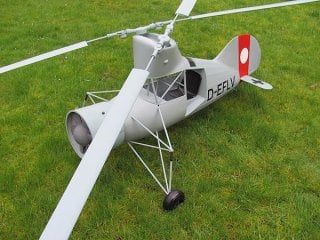The German Fock-Achgelis Fa 223 Was the First True Military Transport Helicopter
Six experimental prototypes were produced and these highlighted the potential of rotary-wing aircraft.
German aviation pioneers saw the potential of the helicopter even before the outbreak of World War II, and just before the outbreak of hostiles developed the Flettner Fl 265, which was the first true helicopter to take to the skies. Six experimental prototypes were produced and these highlighted the potential of rotary-wing aircraft.
However, neither the Flettner Fl 265 nor improved Fl 282 Kolibri (Hummingbird) were used for much more than providing an eye-in-sky in a convoy protection role and later for artillery spotting. Instead, it was the German Fock-Achgelis Fa 223 that had the distinction of being the first successful transport helicopter.
The Fa 223 was the result of a partnership of noted aviation pioneer and Focke-Wulf co-founder Henrich Focke and German aviator Gerd Achgelis. Beginning in 1938, the pair headed the development program for what eventually became a twin-rotor transport aircraft that was powered by BMW engines and was able to carry six passengers. Known as the Fa 226 “Hornisse” (“Hornet”), it met the specifications of Lufthansa for commercial service but the German military also expressed interest and it went on to become the Fa 223 “Drasche” (“Dragon’).
The program moved forward but the first flight didn’t take place until August of 1940—but it seemed promising as the craft could reach a speed of 113 miles per hour and reached an altitude of 23,300 feet in testing. It was powered by a centrally mounted engine, while the twin rotors rotated in opposite directions. In the event of engine failure, the gearbox would disengage and allow the blades to “auto-rotate” until the aircraft made a (hopefully) safe landing. As with the Fl 265, this helicopter was fitted with a tricycle wheeled undercarriage.
With its two rotors, the Fa 223 Dragon was quite unconventional by the standards of today’s helicopters and unlike the American-built Sikorsky R-4, it didn’t influence postwar design in any meaningful way. In tests, it was found that there were also issues with severe vibration that made even short flights uncomfortable while the aircraft proved difficult to control at low speeds. Efforts to correct those problems took almost two years, which delayed the Luftwaffe’s plans to build up to four hundred per month to be used in a variety of roles.
The five intended variations included the Fa 223A, which would carry two anti-submarine depth charges; the Fa 223B, which was fitted with a long-range drop tank for use in a reconnaissance role; the Fa 223C, which was fitted with a winch and cable reel for search and rescue missions; the Fa 223 cargo carrier, which could carry up to two thousand pounds; and the Fa 223E, a trainer model with dual controls. The various models were to be fitted with a nose-mounted MG15, primarily as a defense weapon.
Allied bombing disrupted production and only thirty-seven were actually built and only eleven ever flown. However, those eleven aircraft performed well and highlighted the capabilities of rotary-wing craft for military operations. One was used to move artillery batteries to previously inaccessible mountaintops while another was used to recover downed aircraft.
Interestingly, an Fa 223 Drache was selected to be used by German commando Otto Skorzeny in his mission to rescue Benito Mussolini from a mountain-top hotel in September 1943, but the machine broke down and a Fieseler Fi 156 Storch aircraft was used instead.
After the end of the war, one of the captured aircraft was used as the first helicopter in history to cross the English Channel. While a few were built after the war from captured parts in France and Czechoslovakia, the Fa 223 has mostly faded into history like a mythical dragon.
Peter Suciu is a Michigan-based writer who has contributed to more than four dozen magazines, newspapers and websites. He is the author of several books on military headgear including A Gallery of Military Headdress, which is available on Amazon.com.
Image: Wikimedia Commons / Helicopter Museum of Bückeburg

